Excitable Medium
Excitable Medium
Collaboration: Prof. Alexander Panfilov , Netherladns
In the basic excitable medium, a cell has three states, namely, ready, firing, and recovering; the firing of a cell is stimulated by the firing of adjacent cells. Firing threshold and recovery time are adjustable parameters. Excitable media have long provided models for population dynamics, chemical reactions, brain activity, etc.
The precise conditions for wave front formation and subsequent wave propagation in an excitable medium are critical for understanding the genesis and possible control of reentrant (spiral wave) cardiac arrhythmias. Normally, a wave is initiated by electrical activation of cells connected to spontaneously oscillating pacemaker cells (approximately 1Hz). For every such wave there is a small region of vulnerability, where stimulation often results in the formation of a new front that can evolve into a spiral wave, a precursor of sudden cardiac death.
Visualization of the formation of spiral wave patterns in excitable media is shown in the following images.
Contour line visualization of spiral wave formation
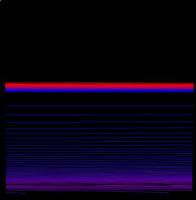 |
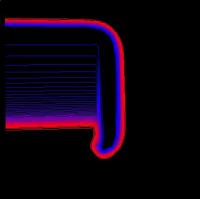 |
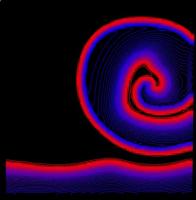 |
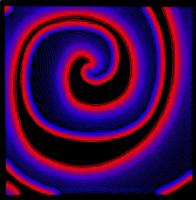 |
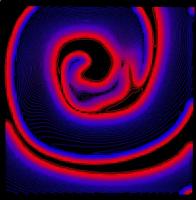 |
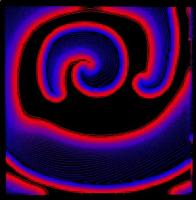 |
 |
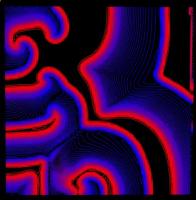 |
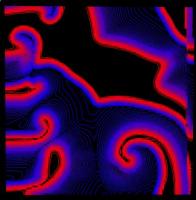 |
 |
 |
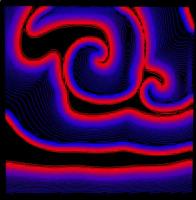 |
Height field visualization
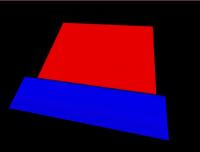 |
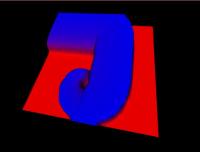 |
 |
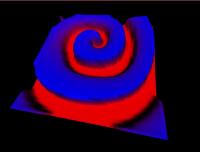 |
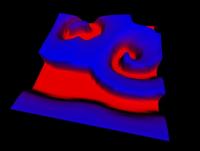 |
 |